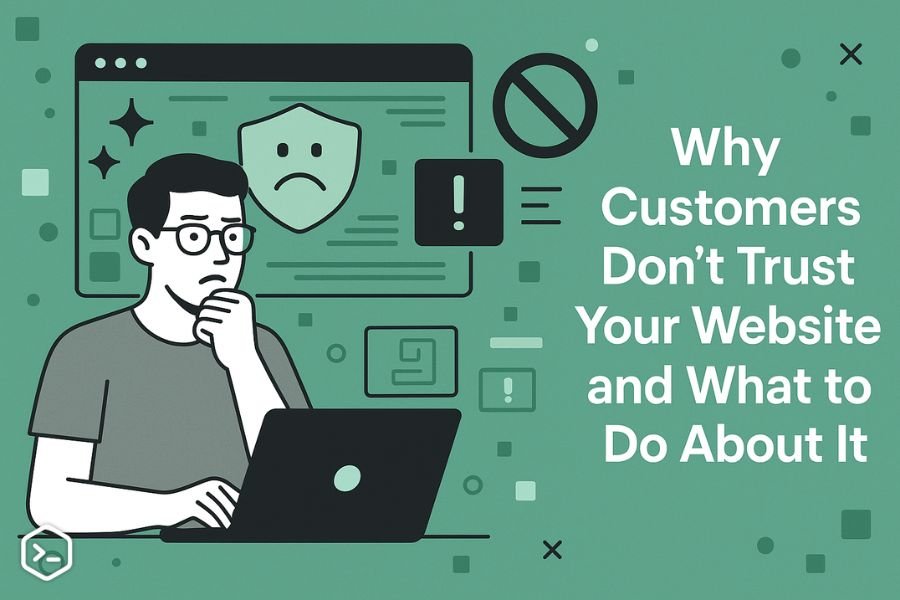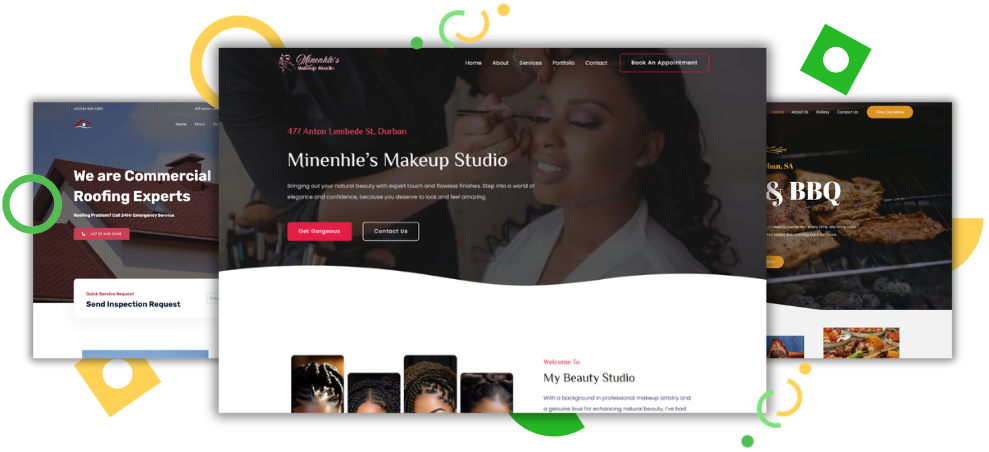When it comes to building a website, you often hear the terms website development and web design thrown around. While both are crucial to creating an online presence, they involve different skills and processes.
In this article, we’ll dive deep into the differences between website development and web design, helping you understand which aspect is best suited for your needs, and how they work together to create a functional, visually appealing website.
What is Website Development?
Website development is the backbone of any website. It refers to the process of creating and maintaining the functionality of a website.
This includes everything from writing code to configuring the server where the website will live. Website development focuses on building the functionality that makes a site work. Without development, your website would simply be a design that doesn’t do anything.
What Does Website Development Include?
Website development involves several key components:
1. Front-End Development
This part of website development deals with the visible parts of the website—the sections users interact with. Front-end developers work on the layout, design, and structure of the website.
They typically use HTML, CSS, and JavaScript to create the website’s structure, style it, and make it interactive. They ensure that everything from buttons to text displays correctly, and that the website is responsive, meaning it adapts to different screen sizes, from desktops to smartphones.
2. Back-End Development
Back-end development focuses on what happens behind the scenes of a website. This is where the server, database, and application live.
Back-end developers work with server-side languages such as PHP, Ruby, Python, or Java to create the logic that processes data, manages user requests, and interacts with the database. For example, when you fill out a form on a website, the back-end takes that information and stores it in the database.
3. Full-Stack Development
Full-stack developers have the skills to handle both front-end and back-end development. They are well-versed in the entire website development process, from designing the user interface to managing databases.
4. Content Management Systems (CMS)
Developers often use CMS platforms like WordPress, Joomla, or Drupal to build websites. These tools allow developers to create websites that are easily manageable by non-technical users. The CMS makes it easier to add, edit, or delete content without needing to write code.
5. Web Hosting and Domain Management
Website developers are also responsible for managing where a website lives on the internet. They set up web hosting accounts, register domains, and ensure the website is always accessible. The hosting server stores all the files and data that make up the website.
How Does Website Development Impact Your Website?
The development phase is what turns an idea into a working website. Without development, your website would be static and useless.
It’s important to understand that website functionality, speed, security, and performance are all determined during the development process. Developers need to make sure the site works smoothly across multiple platforms, that it’s secure, and that it’s optimized for performance.
What is Web Design?
On the other hand, web design is all about how the website looks. Web designers focus on the aesthetics, layout, and user experience (UX) of the website.
They create visually appealing designs that draw users in, making the website easy to navigate and use. Web design is not just about making a site look pretty—it’s also about ensuring that users have a positive experience when interacting with the site.
What Does Web Design Include?
Web design covers several aspects, including:
1. User Interface (UI) Design
UI design is about the visual elements that users interact with on a website. This includes buttons, navigation menus, sliders, and all other interactive elements. A good UI design makes it clear how to use a website, helping visitors navigate without confusion.
2. UX Design
UX design focuses on the overall experience a user has while interacting with the website. It’s about ensuring that the website is easy to use, intuitive, and welcoming. A good UX design helps users accomplish tasks quickly and efficiently. For example, a website’s checkout process should be simple and quick, minimizing the chance of cart abandonment.
3. Responsive Design
A website should work well on all devices—desktop, tablet, or smartphone. Responsive design ensures that the layout and content of a website adapt to the size of the user’s screen. A good web designer uses techniques like flexible grids and media queries to create a design that looks great no matter what device is being used.
4. Typography and Color Scheme
Web designers also choose the fonts and colors used on a website. The right typography and color choices can make a big difference in how users perceive a website. For example, legible fonts and a well-chosen color palette make the site easier to read and create a more enjoyable experience.
5. Branding
Designers help establish and reinforce the website’s brand identity. They use colors, fonts, and logos that reflect the company’s personality and make the website stand out from the competition. The design should be consistent with the company’s overall branding across all platforms, from social media to print.
How Does Web Design Impact Your Website?
Web design directly influences the user experience (UX) and conversion rates on a website. A well-designed website will encourage visitors to stay longer, engage more, and take the actions you want them to take, such as making a purchase or filling out a contact form.
On the other hand, a poorly designed website may drive potential customers away, increasing your bounce rate and lowering your chances of making a sale.
What Are the Key Differences Between Website Development and Web Design?
While web design and website development both contribute to the creation of a website, their roles and objectives are different. Here’s a breakdown of their key differences:
1. Focus and Purpose
- Web Design focuses on aesthetic and visual aspects, ensuring the website is attractive and user-friendly. It’s all about making the website look good and easy to navigate.
- Website Development, on the other hand, focuses on the functionality and structure of the site. It’s about making sure the website works properly, loads fast, and is secure.
2. Skills and Tools
- Web Designers use tools like Adobe Photoshop, Sketch, and Figma for creating layouts and prototypes. They focus on visual elements, color schemes, fonts, and user interface design.
- Web Developers use coding languages like HTML, CSS, JavaScript, and PHP, as well as development frameworks like React, Angular, and Node.js. They write the code that makes the website functional.
3. End Goal
- Web Design aims to create a visually appealing and intuitive user interface, focusing on how the website looks and feels.
- Website Development aims to ensure that the website functions smoothly, handling everything from server-side scripting to database management.
4. Timeline
- Web Design usually comes first in the website-building process, as it sets the visual direction for the project.
- Website Development follows after the design is approved and involves turning the design into a working, functional website.
Why Are Both Website Development and Web Design Important?
Both website development and web design are essential for creating a successful online presence. A website might look great on the surface, but if it’s slow, hard to use, or insecure, users will likely leave. Similarly, even if a website functions well, if it’s poorly designed, visitors won’t enjoy using it.
Here’s why both are equally important:
- Website Design creates a positive first impression and guides users through the site.
- Website Development ensures that the site is fast, secure, and functional, allowing users to interact with it smoothly.
A website that combines great design with robust development will not only attract visitors but also convert them into customers, ensuring long-term success.
Common Questions About Website Development and Web Design
-
What is the difference between web design and web development?
Web design focuses on the visual elements and user experience of a website, while web development is all about the coding and functionality that make the website work.
-
Do I need both web design and web development?
Yes! Both are crucial. Web design ensures your website looks good and is easy to use, while web development makes sure it functions properly.
-
Can a website function without design?
Technically, yes, but it would be extremely difficult for users to navigate and interact with it. A website without good design is likely to drive users away.
-
Which one is more important: web design or web development?
Both are equally important. A beautiful, well-designed website that doesn’t work won’t keep visitors, and a functional website that looks unappealing might not attract users in the first place.
-
Can a web designer become a web developer?
Yes, many web designers learn development skills over time, allowing them to become full-stack developers who handle both the design and development of websites.
-
Is web development harder than web design?
It depends on the person’s skills and interests. Web development can be more technical, requiring knowledge of coding languages, while web design is more focused on visual creativity and user experience.
-
What tools do web designers use?
Web designers typically use tools like Adobe Photoshop, Illustrator, Sketch, and Figma for designing layouts, graphics, and user interfaces.
-
What programming languages do web developers use?
Web developers use languages such as HTML, CSS, JavaScript, PHP, Ruby, Python, and SQL to create functional websites.
By understanding the differences between web design and website development, you can better navigate the website creation process and make sure that both aspects are executed well. Whether you’re looking to build your own website or hire a professional, knowing these distinctions will help you make informed decisions for your online presence.







